Search
To search for an exact match, type the word or phrase you want in quotation marks.
A*DESK has been offering since 2002 contents about criticism and contemporary art. A*DESK has become consolidated thanks to all those who have believed in the project, all those who have followed us, debating, participating and collaborating. Many people have collaborated with A*DESK, and continue to do so. Their efforts, knowledge and belief in the project are what make it grow internationally. At A*DESK we have also generated work for over one hundred professionals in culture, from small collaborations with reviews and classes, to more prolonged and intense collaborations.
At A*DESK we believe in the need for free and universal access to culture and knowledge. We want to carry on being independent, remaining open to more ideas and opinions. If you believe in A*DESK, we need your backing to be able to continue. You can now participate in the project by supporting it. You can choose how much you want to contribute to the project.
You can decide how much you want to bring to the project.
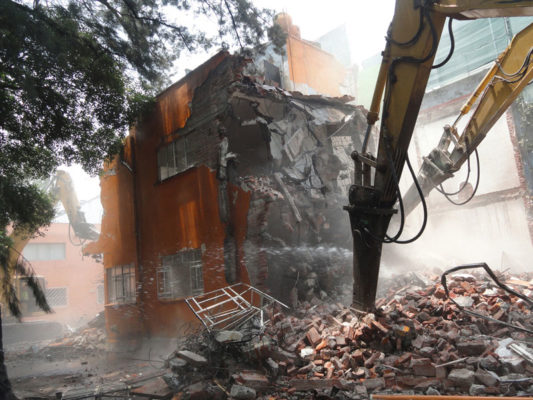
With the cities inactive for months, by force grew in them wastelands, or as the architect Ignasi de Solà-Morales called them, terrain vague, giving them the cinematographic patina they deserve. During the unproductive hiatus they did not have to sell their image and the weeds went on rampage as they pleased, fertilizing land for the emergency of, as Gilles Clement would say, “undecided spaces”: residual urban plots as potential quarries for biological and social diversity.
“2022: Under destruction”, an exhibition curated by Adonay Bermúdez, gives the terrain vague an ambiguous look. On the one hand, the curator warns how the phenomenon of neighboring self-exclusion in deteriorated neighborhoods is growing: impoverished communities are barricading themselves in the suburban abandonment, fearing that the reforms will make their rents more expensive. On the other hand, artists such as Lara Almarcegui, who is included in the exhibition, raise awareness of the importance of peripheral lands. Thus, with her guides about waste grounds (inventories of plots of various cities), she saved these “voids” from oblivion, documenting their past and the investment expectations placed on them. Another way of slowing down this moment of transit, of power vacuum, was the restoration of markets condemned to demolition. In other cases, by responding with the “non-intervention” the invitation to artistically intervene in a space, by pure entropy that place becomes in time a wild garden, freed from the metropolitan design that leaves no room for improvisation, laziness or imagination.
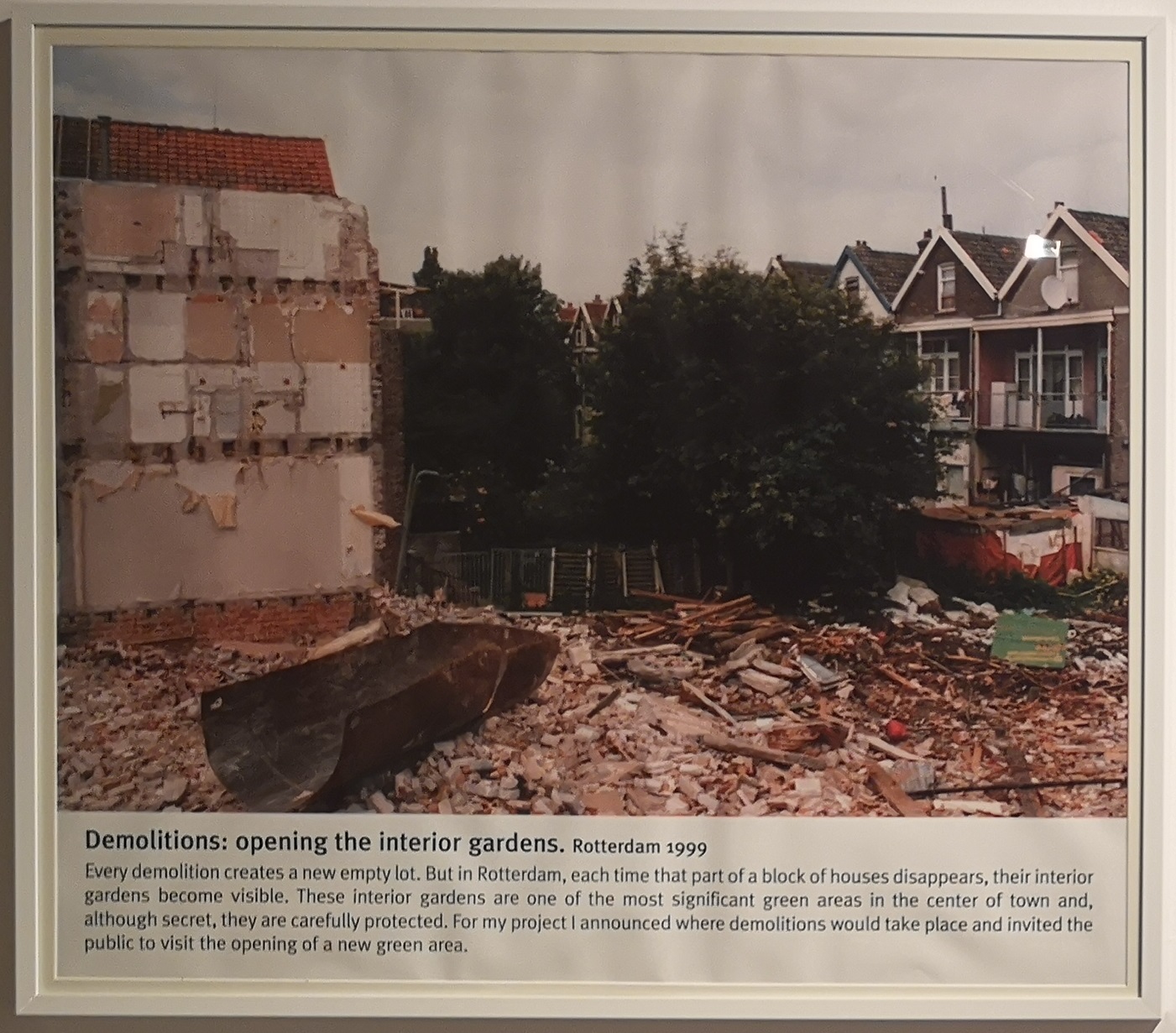
Lara Almancegui. Opening interior gardens
Let us stop right here, between the destroyed landscape and the construction in the making, which seems to suggest us another artist participating in this collective celebrated in the Casal Solleric of Majorca: Mar Guerrero in her project “Paisaje en construcción”, photographing haphazard atrezzos based on industrial materials standing out in front of the Majorcan coast. In one of them, the rainbow crosses a sky charged with electricity, varnishing the glass and metal residues with a disturbing patina. The workers, authors of these ephemeral monuments, are resting. Meanwhile, the future in grayish tones remains hidden, in suspense.
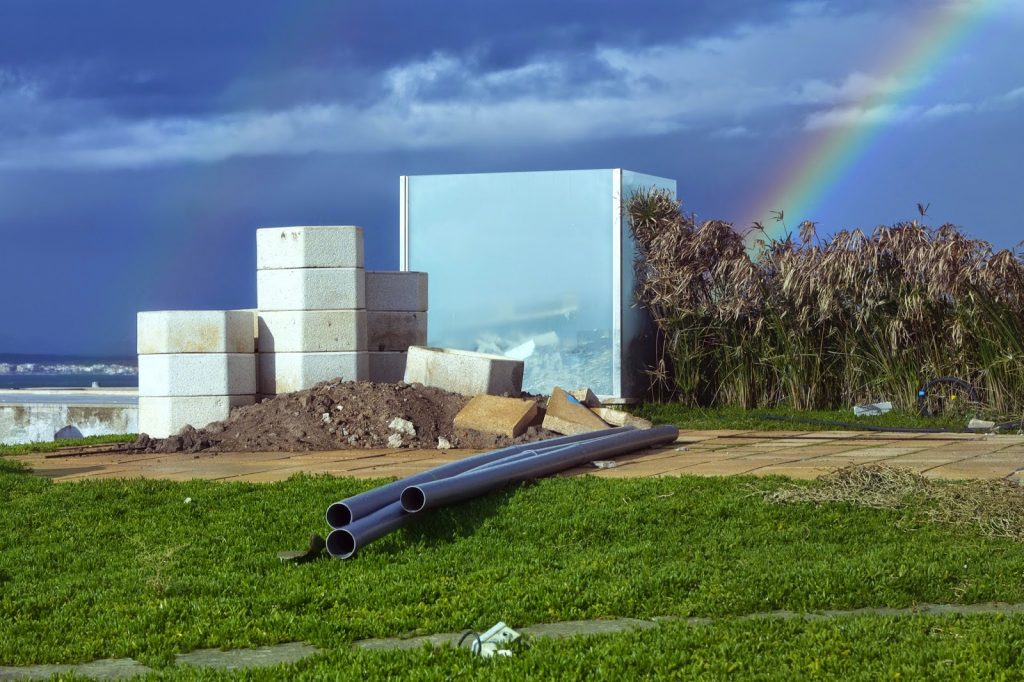
Mar Guerrero. Paisaje en construcción, 2015
Another suburban walker, Tomás Piza, a hardened flâneur, has been interested in confronting the suburban deterioration with the sublimation that the ruin has known in different times. In pictorial representations of what we could call “gardens of the day after”, nature slowly takes over the tattered awnings and the caravans moored on the banks of civilization. On this occasion, the painting goes with an extract from the delirious theory of ruin by Albert Speer, the architect of the Third Reich, where he expressed his concern for leaving ruins comparable to the Greek ones to future generations: “A pile of rusty rubble could hardly tell the heroic inspirations that Hitler admired in the monuments of the past”.
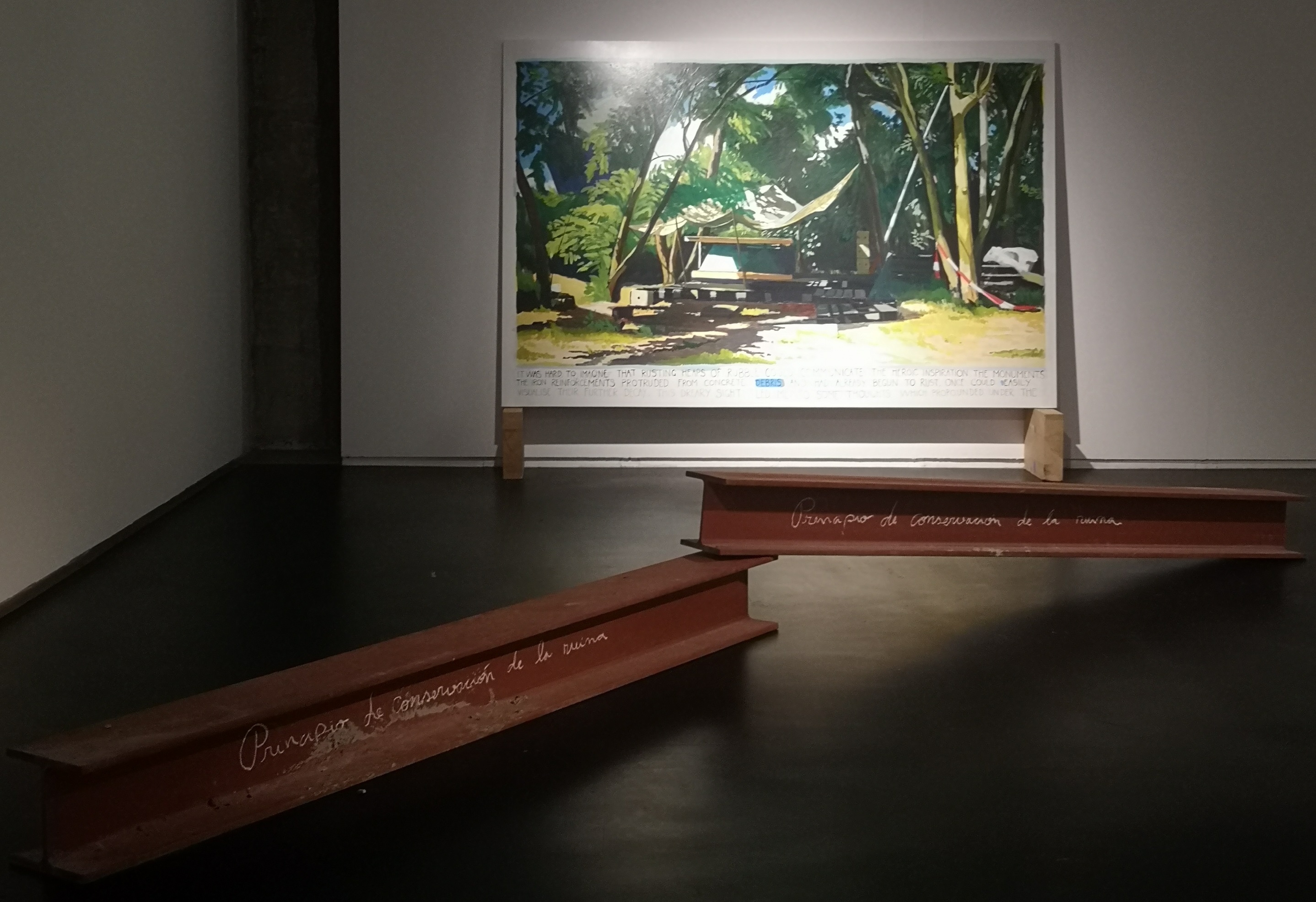
Tomás Piza. Our empire style, 2020
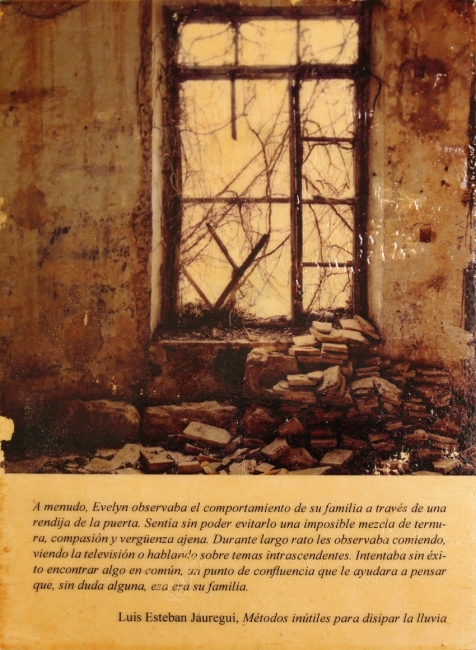
Marla Jacarilla. Do yourself a book or many, 2017
Marla Jacarilla also ironizes about the trivializing of the ruin and the burden of its power of suggestion by putting fragments of non-existent novels by imagined authors at the foot of photographs of abandoned factories.
In Enrique Jezik’s video, huge bulldozers reduce a house to dust, alluding to the prosthetic claws of the Mexican government and its alliances with corrupt construction companies.
Mooring ropes serve Gema Rupérez as a metaphor of the forced nomadism, and the photographs of Sergio Belinchón showing wastelands traversed by tractors freeze that “limbo” moment between the two phases of the life of a suburb. They are images that seem to invite us to stretch to the maximum the time suspended in “indecisive spaces”, provisionally devoid of function and latencies, like thoughts in fallow.
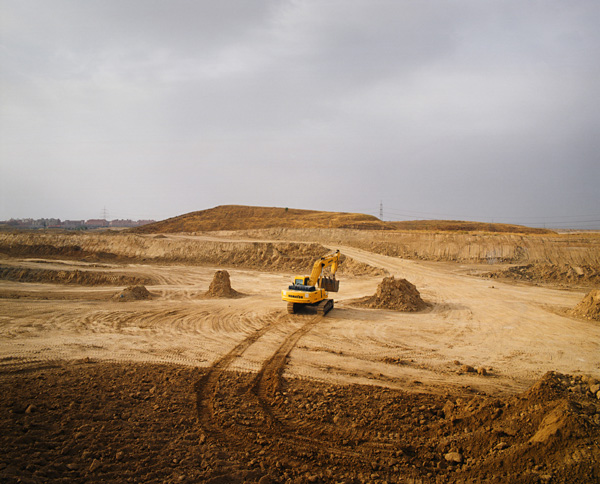
Sergio Belinchón. Suburbia, 2002
(Features Image: Enrique Jezik. Desmonte, 2012)
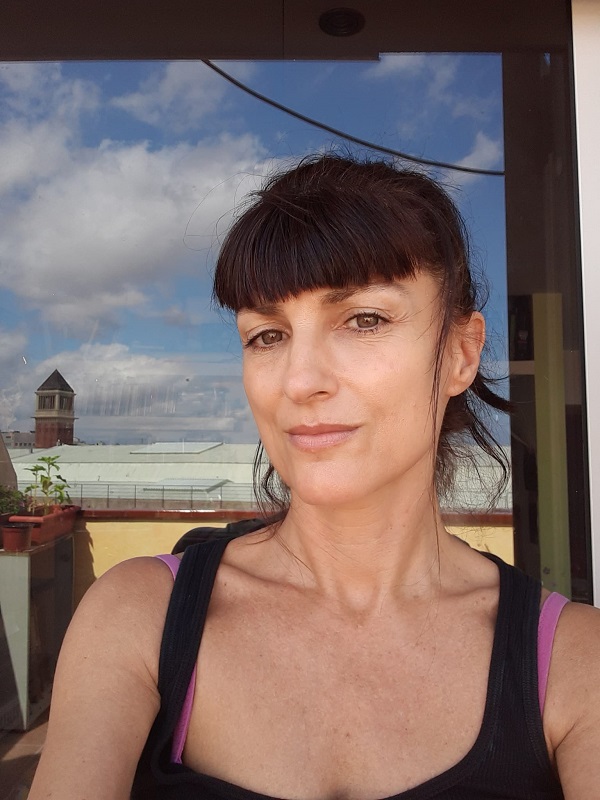
Anna Adell is an essayist and art historian.”Atrapados por Saturno: imaginarios recientes de la melancolía” (Casimiro, 2020) is her latest published book, which was preceded by “Creación y pensamiento hacia un ser expandido” (Trea) and “El arte como expiación” (Casimiro). Other articles by the author in Le bastart: http://lebastart.com/
"A desk is a dangerous place from which to watch the world" (John Le Carré)